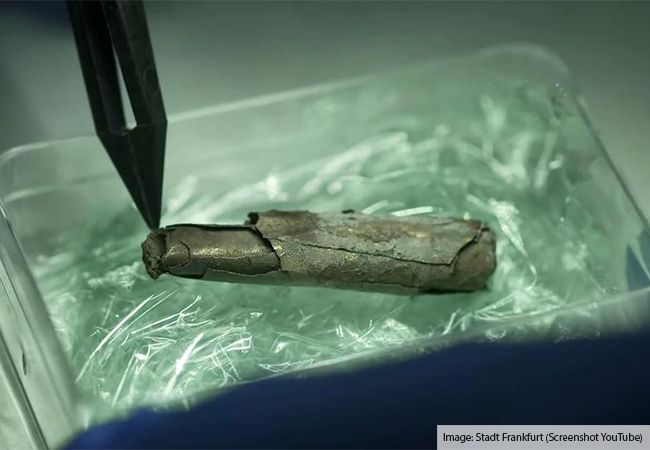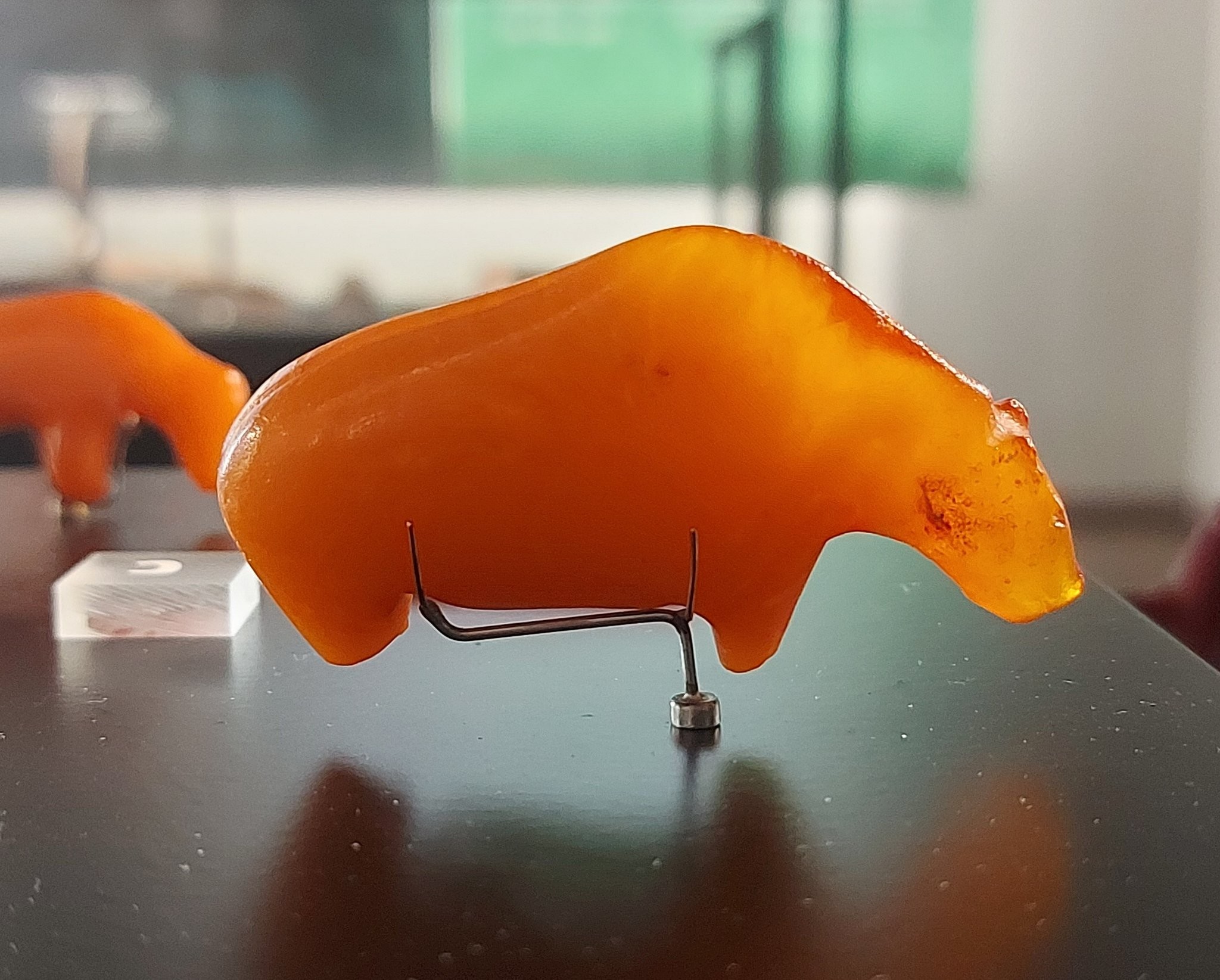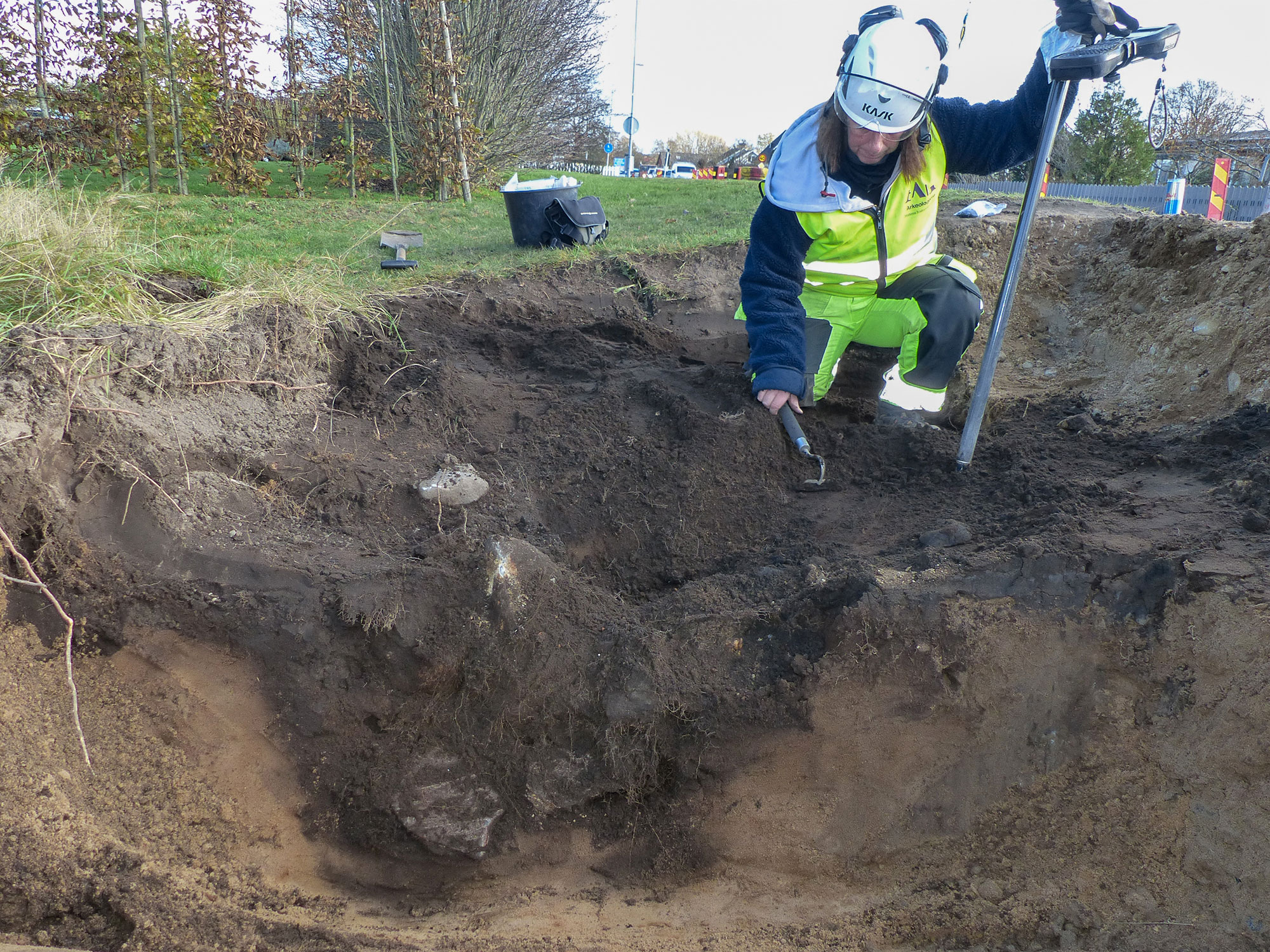One person like that
#archaeology
Scientists have uncovered the aftermath of an "exceptionally violent" attack about 4,000 years ago in Somerset when at least 37 people appear to have been butchered and likely eaten... including men, woman and children. Teenagers and older children made up about half of the victims.
Scrape and cut marks on the bones indicate that the attackers systematically dismembered their victims using stone tools and likely consumed them. "If we saw these marks on animal bones, we'd have no question that they were butchered," says Prof Schulting.
It is the largest case of violence between humans identified in early Bronze Age England, which had been considered a peaceful time. Before this discovery, only about 10 victims of violent attacks had been found from the period, Prof Schulting says.
One person like that
1 Comments
"Frankfurt silver inscription" - Oldest Christian testimony found north of the Alps | Aktuelles aus der Goethe-Universität Frankfurt
What makes the find so special is its age. The grave in which the amulet was found is dated to between 230 and 270 AD. There has never been such early, authentic evidence of pure Christianity north of the Alps. All finds are at least around 50 years younger. There are historical references to the first Christian groups in Gaul and perhaps also in the province of Upper Germania in the late 2nd century. However, reliable evidence of Christian life in the northern Alpine regions of the Roman Empire generally only dates back to the 4th century AD.
This is a really exceptional find!
#archaeology #Germany
2 Likes
Paderborn: Mittelalterliche Siedlungsspuren im Osten der Stadt entdeckt
Grabungen auf einem Acker an der Detmolder Straße in Paderborn, der auch unter dem Flurnamen „Winkelland“ bekannt ist, haben Erstaunliches zutage gebracht. Was für Urnengräber aus der Bronzezeit gehalten worden war, entpuppte sich nun als Siedlung aus dem Mittelalter.
3 Likes
I may or may not have already shared this. But in an effort to clear my phone's numerous hitherto unread tabs, better to share twice than not at all.
NASA scientists have rediscovered a long-lost "city" buried under 100ft of ice, 58 years after it was abandoned as a US base during the Cold War. Camp Century, built in 1959 in northwest Greenland, was a never-completed secret launch site for ballistic missiles to reach the Soviet Union. As ice began to crush the site, the US abandoned the project and left the camp - which could have expanded to 33 bases - to be slowly lost to the elements.
That's until NASA scientist Chad Greene, helped by agency expert Alex Gardner, flew over Greenland in April this year to map ice sheets and estimate future sea level rise. "We were looking for the bed of the ice and out pops Camp Century," said Mr Gardner, describing how their radar-detecting structures appeared to align with tunnels built in the base. "We didn't know what it was at first," Mr Gardner added.
Officially, Camp Century was created to test sub-ice construction techniques, but the real plan was top secret - creating a hidden launch site in case of conflict with the Soviets.
5 Likes
https://hcommons.social/@opencontext/113596041503221132 opencontext@hcommons.social - We're happy to report that the Internet Archive has restored its (amazing!) IIIF services, so dynamic images are available again in Open Context.
You can again zoom through 10's of thousands of images (mostly of dirt! 😎 ). Here's an example:
https://opencontext.org/media/5cb5c5c1-1bf5-4a77-5c1d-19c5a80ed3cb/full
4 Likes
1 Comments
https://hcommons.social/@paregorios/113589440974068263 paregorios@hcommons.social - Google emails me a monthly "search performance" report for the pleiades.stoa.org domain, which always amuses me because we have 40,000+ places and our overall traffic pattern is historically wide and flat, with very small numbers of hits separating the leaders from the next tier etc. across a wide and flat histogram (see tiny "click" counts, below).
But anyway, the three "growing queries" this month were:
57 clicks: Philistia (region): https://pleiades.stoa.org/places/660988416 (via one of its attested Akkadian names "Palastu", I have no clue to why ... somebody linked it on a syllabus?)
29 clicks: Zucchabar: https://pleiades.stoa.org/places/295374 (Ridley Scott strikes again)
14 clicks: Trimithis: https://pleiades.stoa.org/places/776235 (apparently some people still read the NYTimes)
You're welcome to boost if you like.
#PleiadesGazetteer #ancientGeography #ancientHistory #archaeology #gazetteers
4 Likes
2 Likes
#Prehistoric #Malta | The Incredible #Archaeology Museum is Mind-Blowing | #Megalithomania
https://www.youtube.com/watch?v=0dso3NMfIWA
A thorough exploration of the remarkable National Museum of Archaeology in #Valletta, Malta. Hugh Newman takes a close look at the beautifully-carved blocks with 3D reliefs, elongated skulls, cart-ruts, goddess figurines, miniature artifacts and monumental statues that are on display, revealing a stunning #megalithic legacy that has been on the island since the early #Neolithic era. Includes exclusive 3D scans.
2 Likes
Alison Fisk on X: "Ancient Egyptian blue faience bead in the form of a curled-up hedgehog! 🦔❤️ Middle Kingdom, c. 1985 -1650 BC. National Museum of Scotland 📷 by me https://t.co/TfSfSWdUWX The ancient Egyptians may have worn hedgehog-shaped beads and amulets for protection, invoking the https://t.co/6eeKEoNg8i" / X https://x.com/AlisonFisk/status/1858856515676901400
4 Likes
2 Comments
https://social.anoxinon.de/@ninawillburger/113378436791582129 ninawillburger@social.anoxinon.de - A stunning #IceAge masterpiece: a big cat (thought to be a snow leopard) carved in mammoth ivory more some 40,000 years ago! Length 8.7 cm, found at the Vogelherd Cave on the Swabian Jura.
On display at Museum Universität Tübingen
📷 me
6 Likes
1 Comments
2 Shares
https://social.anoxinon.de/@ninawillburger/113476183484396734 ninawillburger@social.anoxinon.de - A figurine of a bear carved from amber 10,000 to 8,000 years ago. Found on the west coast of Fanø, from a submerged settlement of the Mesolithic period.
Bears played an important role in the life of hunters,figurines such as this were worn as pendants.
On display at National Museum Copenhagen
📷 me
3 Likes
einige überraschende ergebnisse von genetischen untersuchungen in pompeii. ich finde es ja zuerst sehr überraschend, dass man überhaupt genetisches material hat sammeln können, das noch untersucht werden konnte. ich war der meinung, besonders hitze zerstört dns. und pompeii war ziemlich heiß ....
und wie so oft werfen genetische untersuchungen bestehende ansichten ziemlich durcheinander.
#archäologie #archéolgie #archaeology #pompeii #genetik #dns #dna
Alte DNA schreibt die Geschichte der Verschütteten von Pompeji neu
Forschende der Universität Florenz, der Harvard University und des Max-Planck-Instituts für evolutionäre Anthropologie in Leipzig haben durch die Analyse alter DNA bisher gängige Annahmen über die Bewohner Pompejis in Frage gestellt. Im Gegensatz zum äußeren Erscheinungsbild lieferte die DNA unerwartete neue Informationen über Geschlecht und Verwandtschaftsverhältnisse und widerlegt eine seit 1748 erzählte Geschichte. Die genetischen Daten unterstreichen außerdem den kosmopolitischen Charakter des Römischen Reiches und zeigen, dass die Bewohner Pompejis hauptsächlich von Einwanderern aus dem östlichen Mittelmeerraum abstammten.
6 Likes
4 Shares
Archaeologists Are Bewildered by a Skeleton Made From the Bones of at Least Eight People Who Died Thousands of Years Apart | Smithsonian
One person like that
1 Comments
https://mastodonapp.uk/@tess_machling/113436326148088904 tess_machling@mastodonapp.uk - To take your mind off the absolute nightmare of today, have a read of this fabulous tale of sleuthing by the wonderful Cat Rees.
Honestly, I love these kind of #archaeology #socialhistory rabbit holes.
Enjoy! ❤️
2 Likes
https://social.anoxinon.de/@ninawillburger/113425026047323493 ninawillburger@social.anoxinon.de - An amazing finger ring from Nijmegen: a #Roman rock crystal ring bearing the portrait of a woman, the elaborate hairstyle was popular in the early 2nd century AD.
On display at Museum Het Valkhof
📷 me
2 Likes
News - Damaged Viking Cemetery Excavated in Sweden - Archaeology Magazine https://archaeology.org/news/2024/10/30/damaged-viking-cemetery-excavated-in-sweden/
4 Likes
Mediaeval Mythbusting Blog #2: The Problem of “Witchmarks” - Triskele Heritage
The inaccurate term refers to a loosely associated group of marks which are found in historic buildings which include M’s and double-V’s, pentagrams, knotwork, meshes, circular designs and burn marks. More information on the subject can be found in my paper which I delivered to the Hidden Charms conference in 2016. Research by an increasing number of scholars, archaeologists and writers (sometimes all three in one!) has largely concluded that these marks were deliberately created by people across a wide period of time spanning the mediaeval, early modern and modern eras and that they may relate to the practice of averting evil or bad luck whilst also bringing good luck to the occupants of buildings (as well as other locations including trees and caves).
5 Likes
https://social.anoxinon.de/@ninawillburger/113391351968213314 ninawillburger@social.anoxinon.de - Neolithic knives found in the pile dwelling settlement in Niederwil/Switzerland (3900-3500BC). The blades are made of flint.They were fastened with birch tar in the handles made of poplar wood.Knives like these were presumably mainly used for harvesting
On display at Archäologisches Museum Frauenfeld
📷 me
4 Likes
https://mastodon.online/@archeaids/113380555619671302 archeaids@mastodon.online - Excavations at indigenous sites dating from ca. 9,000 BCE to 1,000 BCE in Florida. #Archaeology
2 Likes









/https%3A%2F%2Ftf-cmsv2-smithsonianmag-media.s3.amazonaws.com%2Ffiler_public%2Fa4%2F26%2Fa426c7fb-e4cc-499d-81a3-de0eb2923e37%2Furn_cambridgeorg_id_binary-alt_20241019094932-63883-optimisedimage-png-s0003598x24001583_fig2.jpeg)




